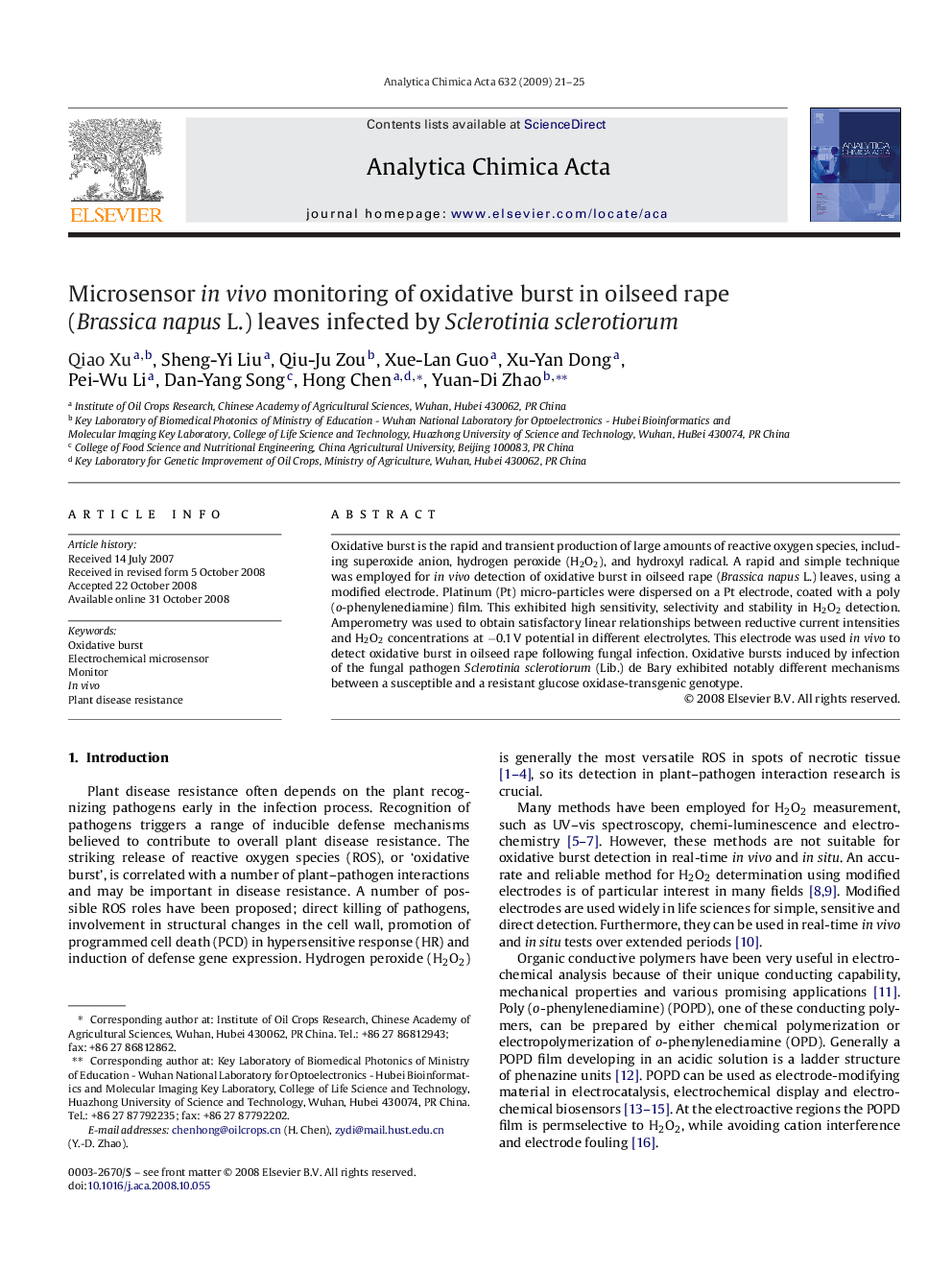| Article ID | Journal | Published Year | Pages | File Type |
|---|---|---|---|---|
| 1169634 | Analytica Chimica Acta | 2009 | 5 Pages |
Oxidative burst is the rapid and transient production of large amounts of reactive oxygen species, including superoxide anion, hydrogen peroxide (H2O2), and hydroxyl radical. A rapid and simple technique was employed for in vivo detection of oxidative burst in oilseed rape (Brassica napus L.) leaves, using a modified electrode. Platinum (Pt) micro-particles were dispersed on a Pt electrode, coated with a poly (o-phenylenediamine) film. This exhibited high sensitivity, selectivity and stability in H2O2 detection. Amperometry was used to obtain satisfactory linear relationships between reductive current intensities and H2O2 concentrations at −0.1 V potential in different electrolytes. This electrode was used in vivo to detect oxidative burst in oilseed rape following fungal infection. Oxidative bursts induced by infection of the fungal pathogen Sclerotinia sclerotiorum (Lib.) de Bary exhibited notably different mechanisms between a susceptible and a resistant glucose oxidase-transgenic genotype.
